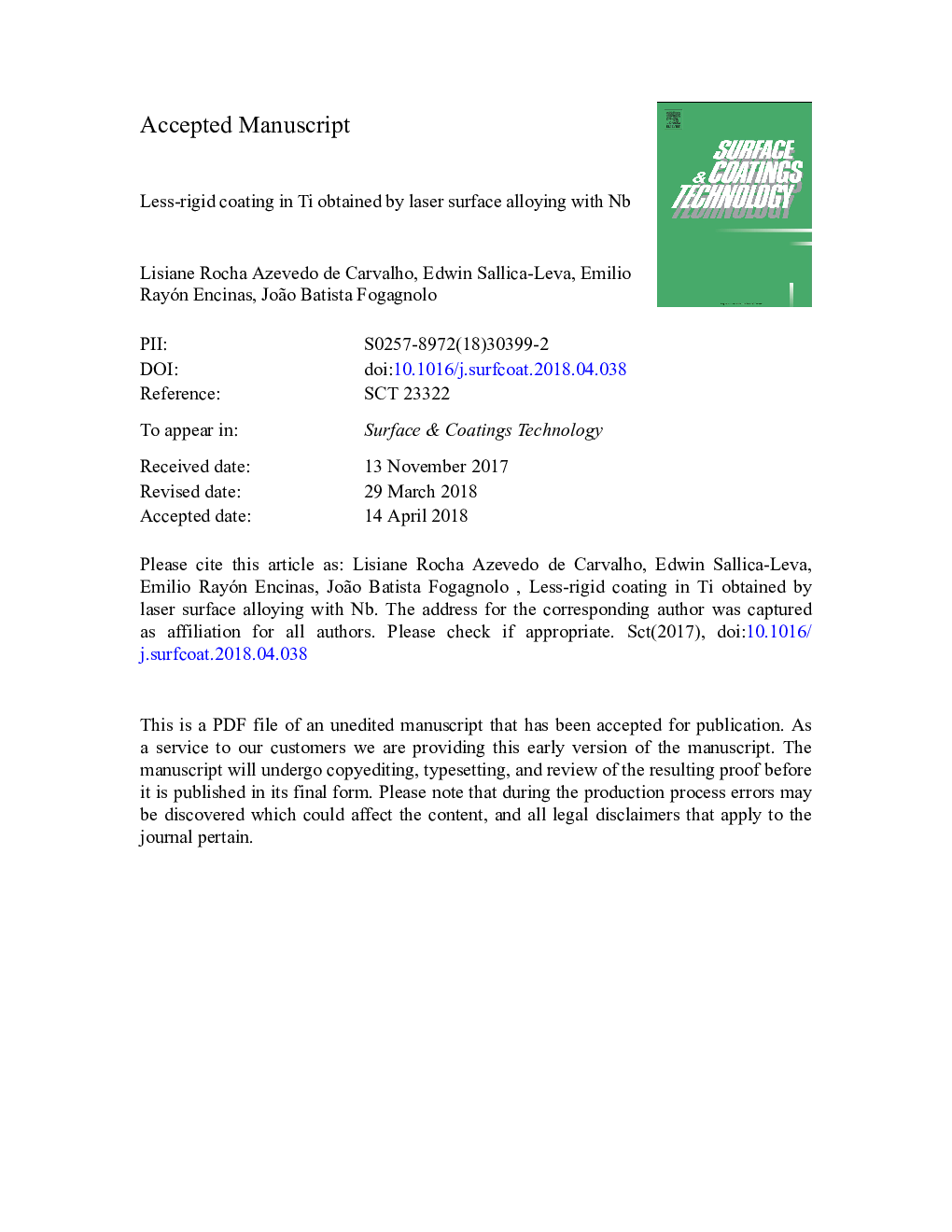| Article ID | Journal | Published Year | Pages | File Type |
|---|---|---|---|---|
| 8023633 | Surface and Coatings Technology | 2018 | 46 Pages |
Abstract
The fabrication of parts with stiffness gradation specifically designed to attain higher mechanical and/or biomedical performance is receiving increasing scientific and technological interest. This work reports the use of laser surface alloying to introduce Nb into the surface layer of Ti pieces and thus obtain continuous coatings composed of TiNb alloys. By controlling the laser processing parameters, coatings with lower Young's modulus and higher hardness compared to the substrate, practically free of cracks and with very low porosity were obtained, using energy densities in the range of 24 to 65â¯J/mm2. However, compositional heterogeneity mainly due to microsegregation during the solidification process was observed. Increasing the energy density resulted in deeper fusion zones, which increased the substrate fusion and thus decreased the Nb content and produced a coating with a microstructure predominantly composed of α/α' acicular phase. On the other hand, the Nb content of the coatings produced with lower energy densities was high enough (~20-30%in mass) to (meta)stabilize the less-rigid α” and β phases, which promoted the highest reductions in the Young's modulus of the investigated coatings. Besides the lower stiffness, all coatings presented at least twice the hardness of the substrate. Maps of the properties constructed from the nanoindentation results showed that, despite the compositional heterogeneity, homogenous values of Young's modulus and hardness were attained and the change in the interface region was gradual, in agreement with the concept of functionally graded materials.
Related Topics
Physical Sciences and Engineering
Materials Science
Nanotechnology
Authors
Lisiane Rocha Azevedo de Carvalho, Edwin Sallica-Leva, Emilio Rayón Encinas, João Batista Fogagnolo,
